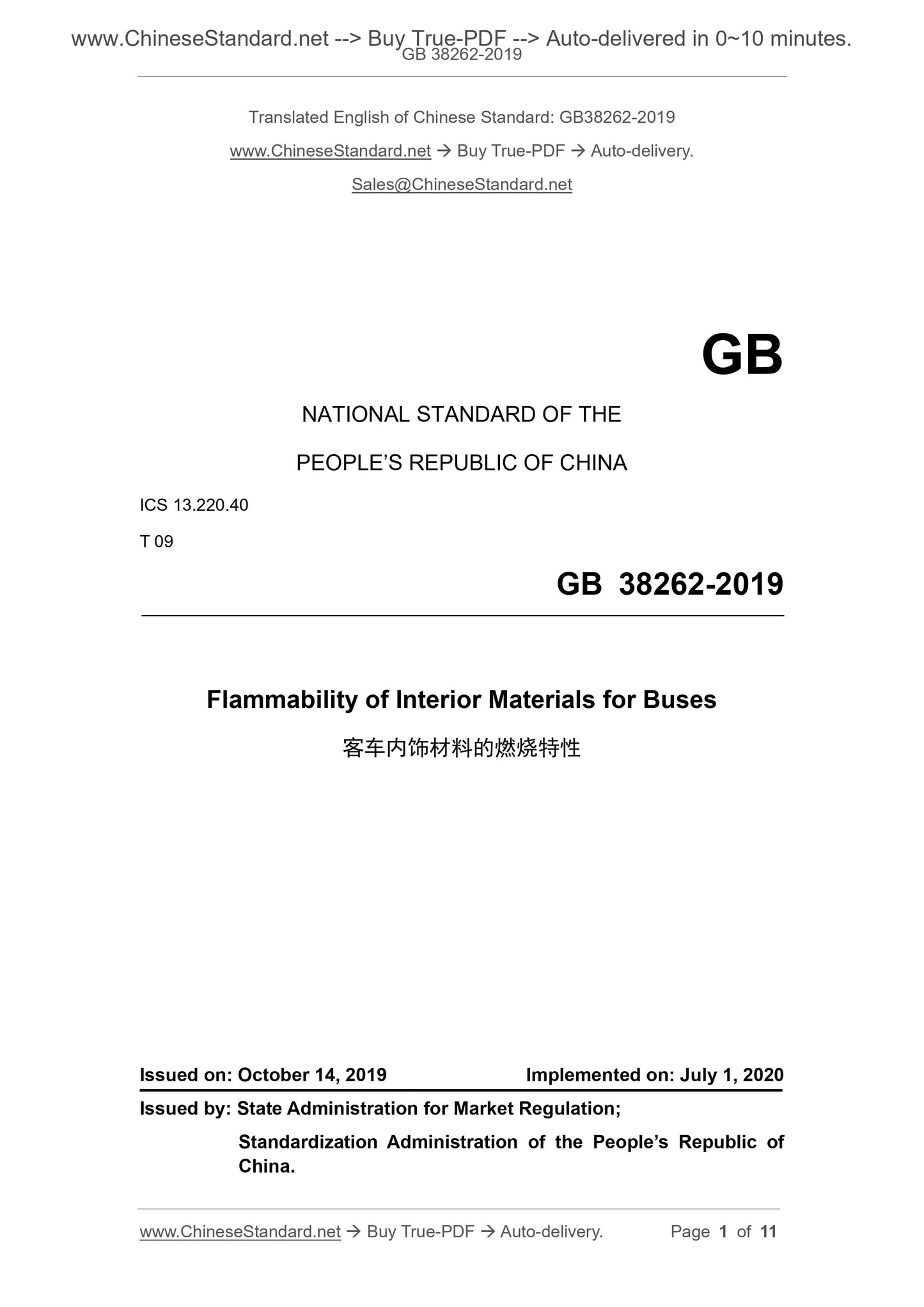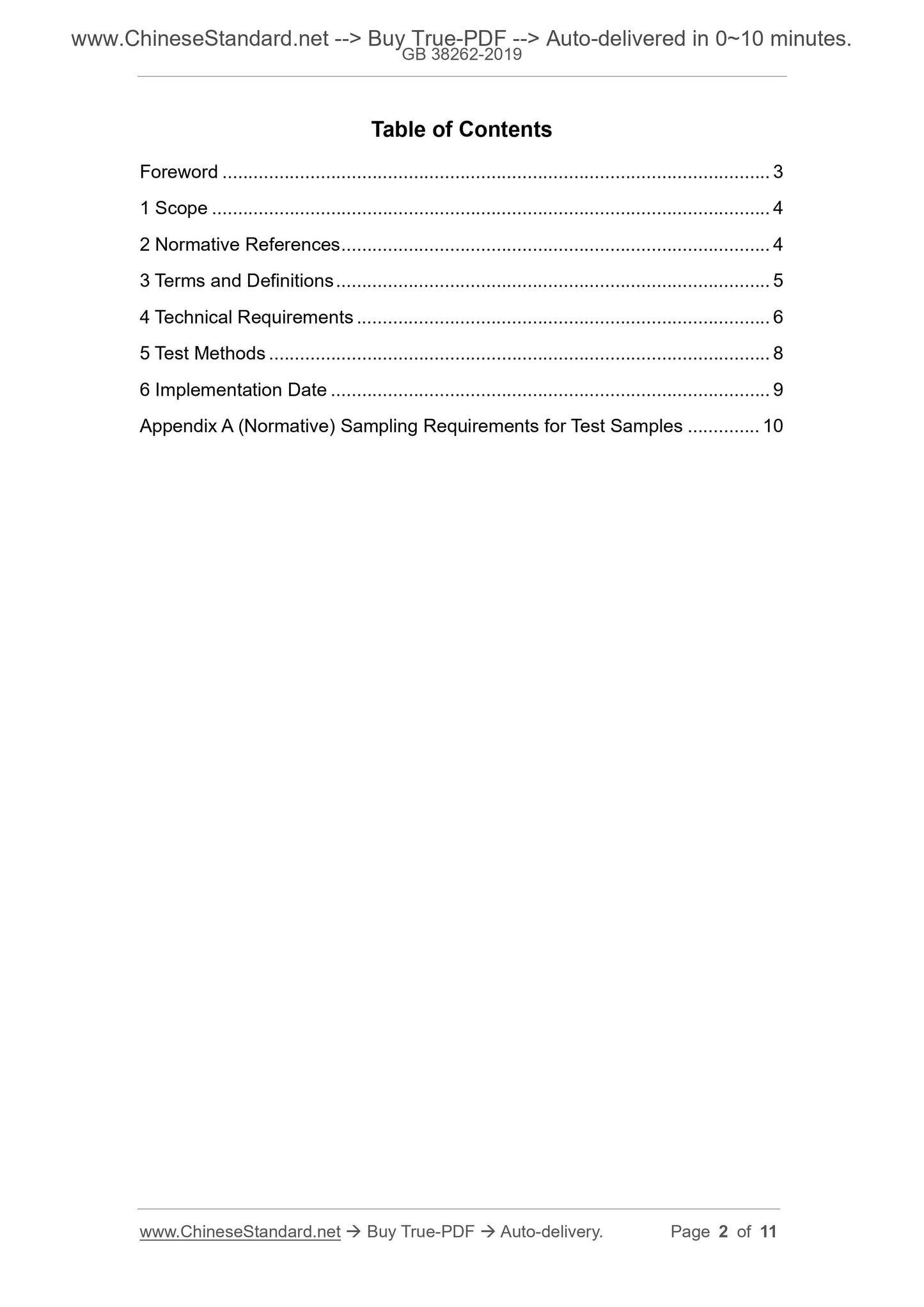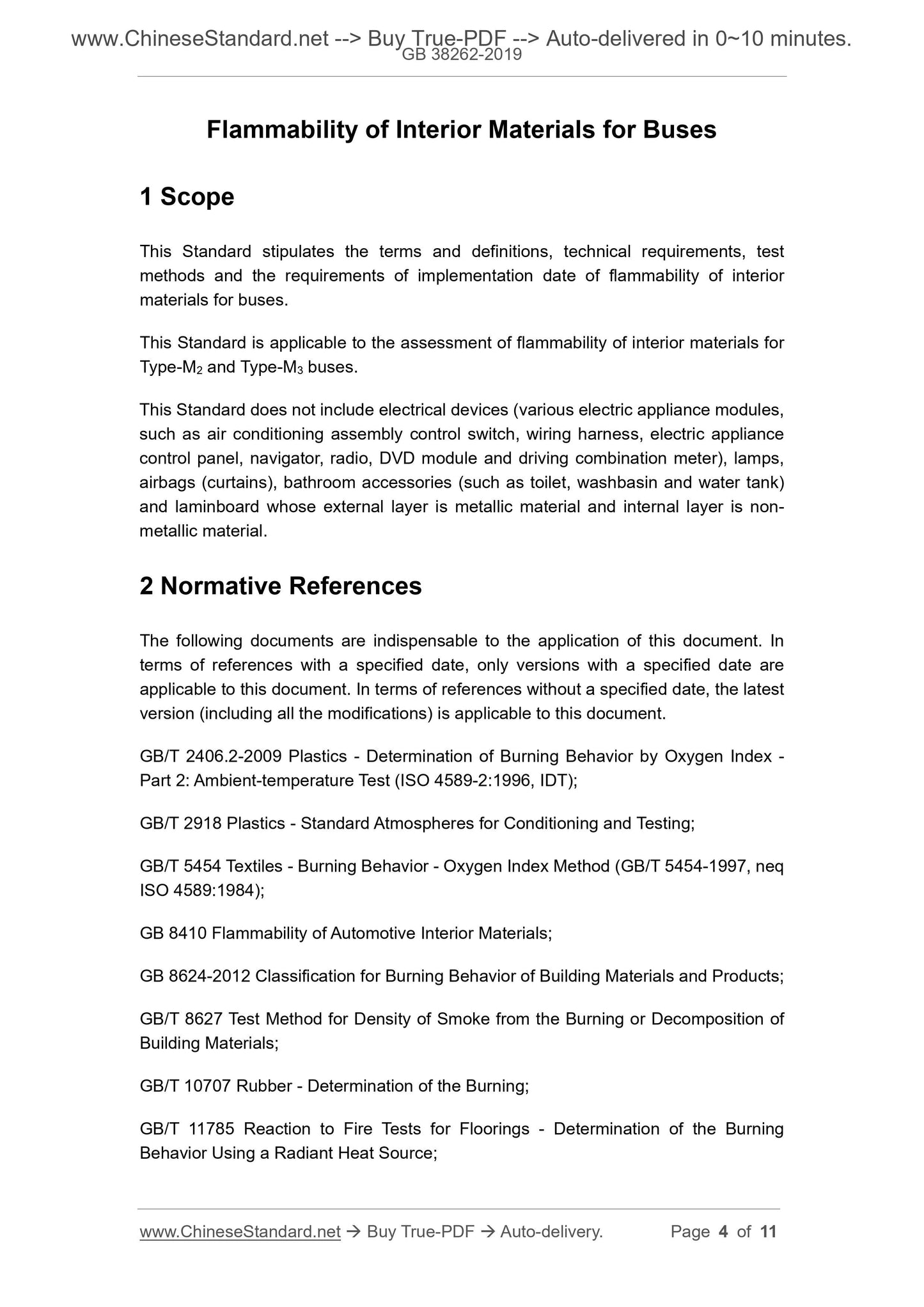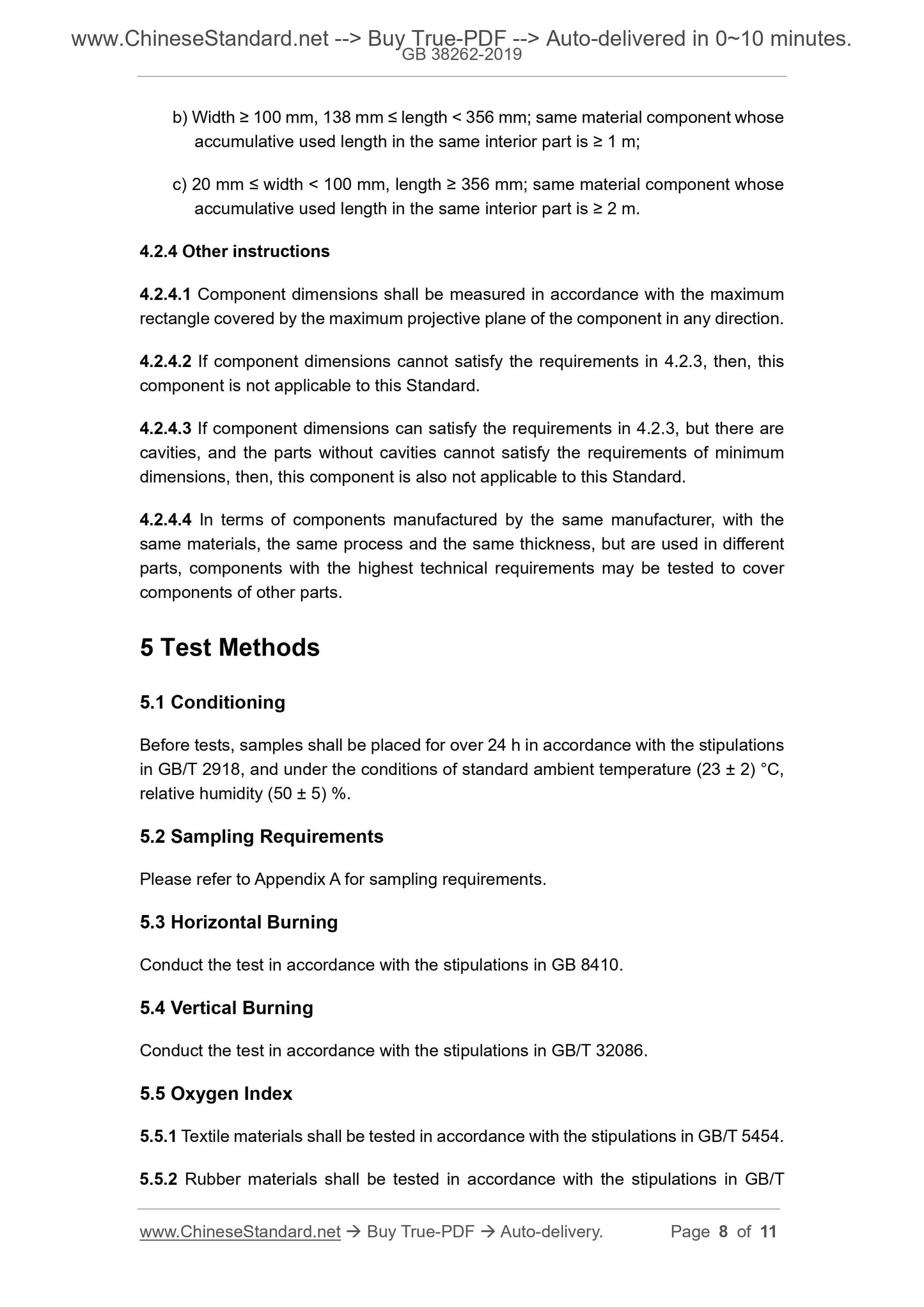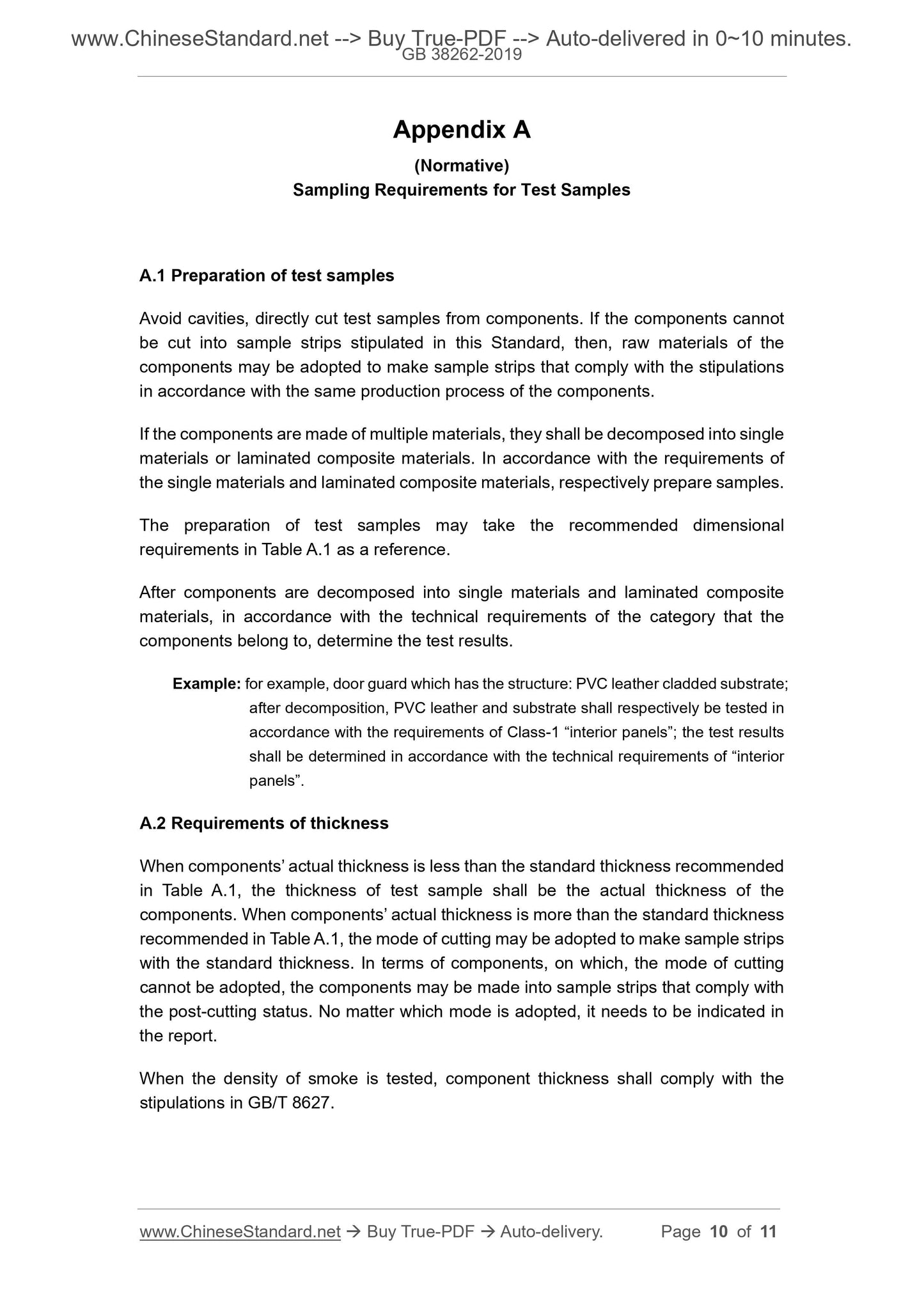1
/
of
5
www.ChineseStandard.us -- Field Test Asia Pte. Ltd.
GB 38262-2019 English PDF
GB 38262-2019 English PDF
Regular price
$105.00
Regular price
Sale price
$105.00
Unit price
/
per
Shipping calculated at checkout.
Couldn't load pickup availability
GB 38262-2019: Flammability of Interior Materials for Buses
Delivery: 9 seconds. Download (and Email) true-PDF + Invoice.Get Quotation: Click GB 38262-2019 (Self-service in 1-minute)
Newer / historical versions: GB 38262-2019
Preview True-PDF
Scope
This Standard stipulates the terms and definitions, technical requirements, testmethods and the requirements of implementation date of flammability of interior
materials for buses.
This Standard is applicable to the assessment of flammability of interior materials for
Type-M2 and Type-M3 buses.
This Standard does not include electrical devices (various electric appliance modules,
such as air conditioning assembly control switch, wiring harness, electric appliance
control panel, navigator, radio, DVD module and driving combination meter), lamps,
airbags (curtains), bathroom accessories (such as toilet, washbasin and water tank)
and laminboard whose external layer is metallic material and internal layer is non-
metallic material.
Basic Data
| Standard ID | GB 38262-2019 (GB38262-2019) |
| Description (Translated English) | Flammability of Interior Materials for Buses |
| Sector / Industry | National Standard |
| Classification of Chinese Standard | T09 |
| Classification of International Standard | 13.220.40 |
| Word Count Estimation | 12,194 |
| Date of Issue | 2019-10-14 |
| Date of Implementation | 2020-07-01 |
| Issuing agency(ies) | State Administration for Market Regulation, China National Standardization Administration |
Share
